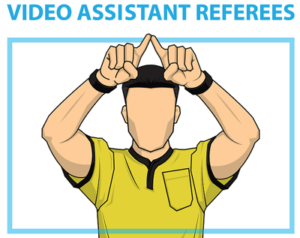 If you hear the words ‘who is responsible for this’, you could read them in two ways. The first is asking information about who is in charge of something, who it is that bears responsibility for it.
If you hear the words ‘who is responsible for this’, you could read them in two ways. The first is asking information about who is in charge of something, who it is that bears responsibility for it.
The second is asking who it is that did something, like asking a group of children who is responsible for drawing on the wallpaper with crayon. Which side of the fence you come down on when it comes to discussing the Video Assistant Referee might well depend on how you feel about the system since its introduction to world football.
Here, we’re mainly concerned with who came up with it as an idea, as well as how it has developed in the years since it was first brought in. We will also have a look at information such as who is responsible for the operation of it and why it is that it’s become such a hot topic for football fans.
There are some that will defend it to the hilt, whilst others are happy to be critical of it and believe that it is ruining football. The truth, as with most things, probably lies somewhere in the middle and, whether we like it or not, it is here to stay.
Refereeing 2.0
 During the 2013-2014 season, the Royal Netherlands Football Association, the KNVB, launched Arbitrage 2.0. That translates roughly as Refereeing 2.0 and was aimed as ensuring a combination of fairness of games whilst maintaining the flow. The aim was to essentially reinvent refereeing, making sure that high-quality officiating was present in all football matches. It was believed that the use of technology would raise the quality of refereeing, in addition to seeing most supporters become more accepting of the decisions that were made by the officials.
During the 2013-2014 season, the Royal Netherlands Football Association, the KNVB, launched Arbitrage 2.0. That translates roughly as Refereeing 2.0 and was aimed as ensuring a combination of fairness of games whilst maintaining the flow. The aim was to essentially reinvent refereeing, making sure that high-quality officiating was present in all football matches. It was believed that the use of technology would raise the quality of refereeing, in addition to seeing most supporters become more accepting of the decisions that were made by the officials.
Arbitrage 2.0 included trials of the use of technology in the form of goal-line technology, courtesy of Hawk-Eye. They also deployed a fifth and sixth referee in matches, who were the ones that stood behind the goal-line and seemingly did next to nothing of any actual use. The hope was that it would allow the assistants to focus on whether a player was offside or onside, whilst the fifth and sixth official focussed on supporting the referee in making decisions around the likes of discipline and so on. It would, the Dutch believed, ensure more correct decisions were made in the penalty area.
Whether that had any basis in reality is a matter for some debate. To most people, the fifth and sixth referees didn’t do anything useful, being just a waste of space. For the KNVB, it was an attempt to improve refereeing that was a step in the right direction, even if it didn’t quite work as many would’ve hoped. It was believed that technology might help to do what the fifth and sixth referee struggled to do, giving the match referee eyes all over the pitch in order to assist with the major decisions that had to be made during the course of a match.
Protecting Referees
The Secretary of the International Football Association Board at the time, Lukas Brud, said,
“With all the 4G and Wi-Fi in stadia today, the referee is the only person who can’t see exactly what is happening and he’s actually the only one who should. We knew we had to protect referees from making mistakes that everyone can see immediately. Soccer has always been very conservative when it came to the introduction of technology. We knew that we are opening a very wide door and that if we started down this path, there would be no way back.”
There is one line in what Brad had to say that seems to be key: ‘protect referees from making mistakes that everyone can see immediately’.
That seems to be the key behind the move to introduce the Video Assistant Referee, not making the right decision but stopping the officials from looking stupid.
If VAR as a system has a fault, it is that it isn’t being used to correct the wrong decisions from the match officials but ensuring that they can’t be overly criticised after the match.
Not that that is what the Dutch had in mind, of course.
The Formative Years Of VAR
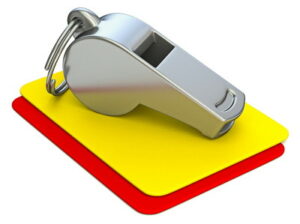 The KNVB began petitioning the IFAB in 2014 to allow them to use video assistance in matches. The International Football Association Board is responsible for the introduction of new laws and the development of the game, so it was on them to give the Dutch permission to use replays to get to the right decision in a football match. Initially there was resistance to the idea, and it wasn’t until Sepp Blatter, the disgraced former President who was notoriously against the development of technology in a footballing context, departed that they got the go-ahead.
The KNVB began petitioning the IFAB in 2014 to allow them to use video assistance in matches. The International Football Association Board is responsible for the introduction of new laws and the development of the game, so it was on them to give the Dutch permission to use replays to get to the right decision in a football match. Initially there was resistance to the idea, and it wasn’t until Sepp Blatter, the disgraced former President who was notoriously against the development of technology in a footballing context, departed that they got the go-ahead.
Gianni Infantino, Blatter’s replacement who would go on to prove himself to be only marginally better than his predecessor, held exploratory meetings over the issue in October 2015. There had been a number of high-profile controversies in football in the build-up to the meeting, such as Thierry Henry’s handball in the World Cup qualifier against Ireland and Frank Lampard’s ‘goal’ against Germany that wasn’t given in 2014. It was with these sorts of events in mind that it was felt that a solution to such glaringly obviously refereeing errors needed to be found.
Brud summed up the general feeling at the time, saying, “Those were serious incidences that could have been easily corrected with assistant referees. If we had mentioned the idea of introducing video referees in 2010, people would say we were crazy, but now they saw it as an opportunity to help referees and to achieve fairer outcomes in a match.” The big problem, of course, was that such technology was un-tested in top-flight matches. Mock trials had taken place in the Eredivise, but not enough to get the seal of approval that was necessary to see the use of technology taken to a wider field.
Then, at the Annual General Meeting of IFAB in March of 2016, everything changed. A decision was made to begin a two-year evaluation of VAR from a scientific point of view. Italy were playing friendly matches against Spain and Germany later that month, which were seen as the perfect opportunity to test-drive the Video Assistant Referee concept. Nothing happened in either match. For Brud, that was a success as it proved that, unlike what many critics feared, VAR would not be used in every match that was played and it wouldn’t be used to ‘re-referee’ matches on a consistent basis.
Adopting How It Would Be Used
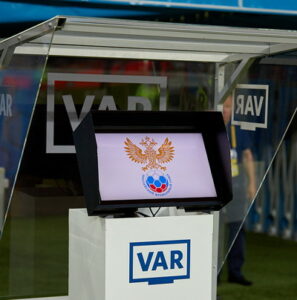 The initial plan for VAR was to use it in most incidents that took place in a football match. However, the two Italy friendlies helped the powers that be realise that that was an entirely unrealistic aim. Instead, its remit was reduced in order to provide the sport with the ‘minimum interference, maximum benefit’ scenario. The Video Assistant Referee’s input was reduced to ‘clear and obvious errors’ in a match, which would become a phrase that would plague VAR and the understanding that most supporters had of how it was to be used.
The initial plan for VAR was to use it in most incidents that took place in a football match. However, the two Italy friendlies helped the powers that be realise that that was an entirely unrealistic aim. Instead, its remit was reduced in order to provide the sport with the ‘minimum interference, maximum benefit’ scenario. The Video Assistant Referee’s input was reduced to ‘clear and obvious errors’ in a match, which would become a phrase that would plague VAR and the understanding that most supporters had of how it was to be used.
The main incidents that the VAR would be turned to for were as follows:
- Possible infringements just before a goal
- Penalties
- Red cards
- Instances when the referee mistakenly cautioned the wrong player
“The game has become quicker and it’s increasingly difficult for referees to keep up with everything and make perfect decisions but we’re not trying to improve every problem in refereeing and that’s a misconception that people have. We’re trying to avoid scandals. We don’t want to create something in football that’s constantly interruptive and destroying the game.” For most people, if that was the plan with the introduction of the Video Assistant Referee system then they have failed on every aspect.
Teething Problems
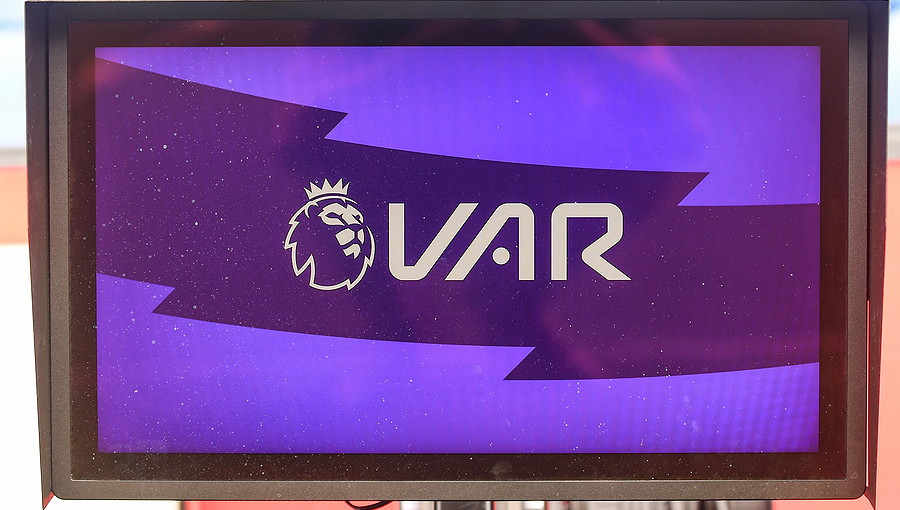
Not long after the initial trial with the Italy matches, it was decided that VAR would be given similar trials by national football associations.
It was introduced by the German Bundesliga, the Premeira Liga in Portugal and Italy’s Serie A, whilst England decided to limit its initial introduction to the FA Cup and League Cup. Meanwhile, in the Australian A-League, a referee went to consult the system in the wake of a winning goal scored from an offside position, only to discover that the system had frozen moments before the incident occurred.
In Portugal, it was impossible to tell whether a goal was offside because there was a flag being waved in front of the camera at the time that the goal was scored. A cup final in Germany had a penalty for one of the teams denied in the 93rd minute, in spite of the fact that the VAR told the referee that he should have another look at it.
Brud said,
“People have a different understanding of the laws of the game. They have a different opinion. The referee is normally basing his decisions on pure neutral facts, but for some people they are emotionally involved and it is really difficult to understand.”
Clear & Obvious Errors
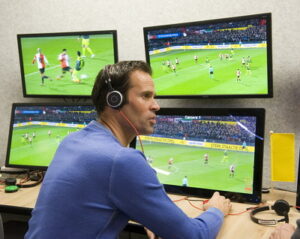 The biggest bugbear of most football supporters is the use of the phrase ‘clear and obvious error’ when discussing the intervention of the Video Assistant Referee. If a long period of time is taken for the VAR to evaluate an offside, for example, you will often hear people, including commentators and pundits that should really know better, decry that if it is taking that long then it isn’t a ‘clear and obvious error’. In reality, that phrase doesn’t count for offsides as they are binary decisions: a player is either onside or they are off.
The biggest bugbear of most football supporters is the use of the phrase ‘clear and obvious error’ when discussing the intervention of the Video Assistant Referee. If a long period of time is taken for the VAR to evaluate an offside, for example, you will often hear people, including commentators and pundits that should really know better, decry that if it is taking that long then it isn’t a ‘clear and obvious error’. In reality, that phrase doesn’t count for offsides as they are binary decisions: a player is either onside or they are off.
When it comes to fouls, red card incidents or possible penalties, things are very different. In order to overturn a decision, the VAR has to feel as though the match referee made a clear and obvious mistake. That, of course, is entirely subjective and too often football fans feel as though the Video Assistant Referee is just protecting their mate rather than trying to give the objectively right decision. Even though referees can go to a monitor on the side of the pitch and have another look, it is often felt that they don’t want to have their decisions questioned by a peer.
According to Brud, it isn’t the officials that are wrong but the supporters. He said, “No one cares if someone had a happy day. This is why this will always be a problem of VAR’s. People just ignore how well it can work. Normally it works well, but as soon as it doesn’t, the discussions start again.” It is certainly true that part of the problem is that match referees are basing their decisions on the rules of the game, which most fans don’t actually understand. Even so, it would take a brave person to say that VAR has worked well so far.
Who Is Responsible For It?
 We know, then, that the Dutch are, at least partially, responsible for the introduction of the Video Assistant Referee system. The question then becomes, who is responsible for running it? The answer differs from country to country, but in the United Kingdom the answer might well help to explain why there are still such major issues with it years after its initial introduction. The role of the VAR is taken up by match referees who might well be in the middle of the park if they weren’t in the control room in Stockley Park.
We know, then, that the Dutch are, at least partially, responsible for the introduction of the Video Assistant Referee system. The question then becomes, who is responsible for running it? The answer differs from country to country, but in the United Kingdom the answer might well help to explain why there are still such major issues with it years after its initial introduction. The role of the VAR is taken up by match referees who might well be in the middle of the park if they weren’t in the control room in Stockley Park.
At the start of the 2022-2023 season, the position of Video Assistant Referee was also given to recently retired Premier League referees. That, in many ways, sums up the problems with VAR. In its most basic form, it is just a video replay of an event that provides officials with a chance to correct errors. The issue is, the people looking at what’s happened are the same people that probably would’ve made the same error in the first place, so they are disinclined to tell their refereeing colleagues about a mistake they’ve made.
There is definitely a world in which VAR can be used well. If referees leave their egos at the door and accept the help that video replays can offer, there is no question that the Video Assistant Referee system can help to eradicate errors more often than not. Most of the problems that have been encountered with it come from the arrogance of officials who refuse to accept that they might well be wrong about something and instead stick to their decisions in a pig-headed fashion. Whether that can ever be eradicated seems unlikely at this stage.